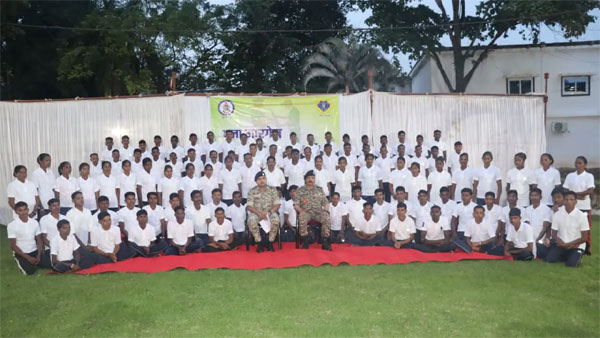Daijiworld Media Network - New Delhi
Raipur, Oct 2: In a significant boost to anti-Naxal operations in Chhattisgarh, 103 Maoists laid down arms in Bijapur district on Gandhi Jayanti, marking one of the largest mass surrenders in recent years. The move is being hailed as a turning point in the state’s campaign to dismantle left-wing extremism through both force and rehabilitation.
Among the surrendering cadres were 49 Maoists carrying a total bounty of over Rs 1.06 crore on their heads. The group included several high-ranking members of the Maoist hierarchy, such as Divisional Committee Members (DVCMs), Platoon Party Committee Members (PPCMs), Area Committee Members (ACMs), militia commanders, and members of the Maoists' parallel administration known as "Jantana Sarkar".

The surrender event was organised under the state government’s Puna Margem (New Path) initiative — a program that promotes rehabilitation over continued violence. Senior officials, including DIG of Police Kamalochan Kashyap, DIG CRPF BS Negi, SP Bijapur Jitendra Kumar Yadav, and senior commandants of the CRPF and Cobra units, were present to oversee the formal handover.
Each surrendered Maoist received a cheque of Rs 50,000 as part of the state’s rehabilitation policy aimed at reintegrating former insurgents into society.
Officials said the decision to surrender was motivated by widespread disenchantment with Maoist ideology, escalating internal divisions within the organisation, and a growing yearning for peace and family life. Repeated losses in encounters, especially the deaths of senior leaders, and diminishing support from local communities have further demoralised the cadres.
Of particular significance was the high number of RPC (Regional Party Committee) members among the group, indicating a deeper shift within the operational ranks of the Maoist setup.
Authorities attribute the success to a multi-faceted strategy involving sustained security operations, rapid infrastructure development—such as new roads, electricity, and drinking water access—and community outreach programs. Initiatives like Niyed Nella Nar and consistent awareness drives around the surrender policy have played a key role in encouraging defectors.
The data reflects a clear trend: since January 2025, Bijapur district alone has recorded 421 arrests, 410 surrenders, and 137 Maoists killed in encounters. In the past two years, the combined figures rise to 924 arrests, 599 surrenders, and 195 neutralisations.
Officials see this mass surrender not merely as an operational win, but as a powerful rejection of extremism by those once trapped in its grip. It underscores a growing appetite for peace, development, and a return to civil life among former rebels—an aspiration the state hopes to nurture further in the years ahead.